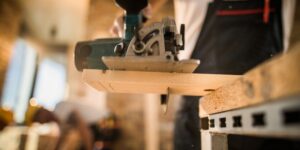
Whether you’re renovating a part of your home, or a new building is going up next door, construction can contribute to lower indoor air quality in several ways. Most notably, construction processes create and stir up dirt, dust, fumes and debris, which can be harmful to one’s health. In this guide, we share a few helpful tips to improve indoor air quality during periods of construction.
Why Indoor Air Quality is Important
The air we breathe directly impacts our health. Indoor air that’s contaminated with pollutants, allergens, debris and toxic chemicals can cause both acute reactions and chronic disease. Therefore, we must have fresh or filtered indoor air to avoid respiratory issues and long-term damage to the lungs and other tissue.
Indoor air quality is often overlooked since some contaminants can’t be seen, smelt or tasted. As such, you must take the right steps to ensure adequate air quality, no matter where you are.
How Construction Impacts Air Quality
When a building is under construction, the surrounding air is subjected to substances that are not normally present. This includes sawdust from carpenters, fine dust from concrete and cement work, and exhaust fumes from fuel-powered tools and generators. While working outdoors, the effects of these substances may not be as dangerous, but when working in an enclosed space, it’s important building occupants have adequate respiratory protection.
Get in touch with Lambton ClimateCare to learn more about indoor air quality and what you can do to improve it!
How to Test Indoor Air Quality
The best way to test indoor air quality is to use an indoor air quality monitor. These monitors can detect various airborne particles, including dust, dander, mould, carbon monoxide and more. Advanced monitors will also share the concentration of contaminants. These numbers can then be compared to health regulation standards to determine whether the air is safe to breathe.
How to Maintain Indoor Air Quality When There’s Construction in the Area
There are several things you can do to preserve your indoor air quality. These include sealing off parts of the building being worked on, using industrial air filtration devices and improving ventilation with open windows, fans and more. Also, anyone working in or near the site must wear adequate PPE by law. This includes using respirators, masks and air filters.
If there is construction going on outside of your building, make sure to shut your windows while contractors are working. This will stop gusts of wind from bringing in unwanted contaminants.
Developing A Construction Indoor Air Quality Plan
To mitigate the risks of polluted indoor air, it’s important that your contractors devise a plan to deal with indoor air quality. For example, if there is construction on only one part of your house or building, then this area should be sealed off so that sawdust and other pollutants don’t contaminate other parts of the house. Likewise, if you have HVAC vents in this area, they must also be sealed off so that contaminated air doesn’t circulate throughout your home.
If you want to know more about what you can do or use to improve your indoor air quality, feel free to reach out to Lambton ClimateCare. Our team will happily discuss our ventilation services and devices so you can breathe better in all circumstances. Call us today!







